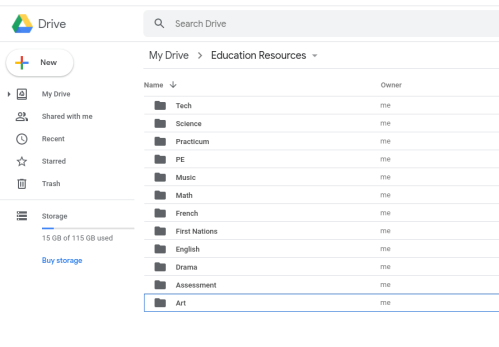#5 Educators implement effective practices in areas of planning, instruction, assessment, evaluation and reporting.
I re-organized my Google Drive of all my teaching tools and created a space where I can easily find my appropriate resources organized into each subject, with additional folders for Assessment and FPPL. I wanted to have easily accessible online resources, so instead of having large binders and piles of papers scattered throughout my future classroom, I can just hit print on whichever worksheet is needed.
As part of my growth, I have been downloading and saving the resources from Coursespaces which my professors have been posting. An overall teaching goal is to accumulate so many online resources through my peers and professors, that I will be over-equipped going into my final practicum. Thanks to this project, I feel much more prepared to tackle my practicums and eventual career.
Below is an example what my google drive looks like currently in my Teaching Resource Folder:

Lastly, a part of my goal was to scan in all of the important paper resources that my teachers have given me this year. I had planned on this before the COVID-19 ordeal began but after I moved out of my house, I left that all behind sadly. As well, I do not have access to a scanner at my current address. Therefore, I would have had to find a bulk scanner either on campus or at Staples and sadly that won’t be happening any time soon. I still believe that my systems of organization will be finalized when I am officially a teacher and I will have every opportunity to explore each option. Right now, it is more of a guessing game and I can only share what I believe will be the most effective for me.
Overall though, thank you very much Diana for the semester. I hope you doing well and staying safe. All the best.





